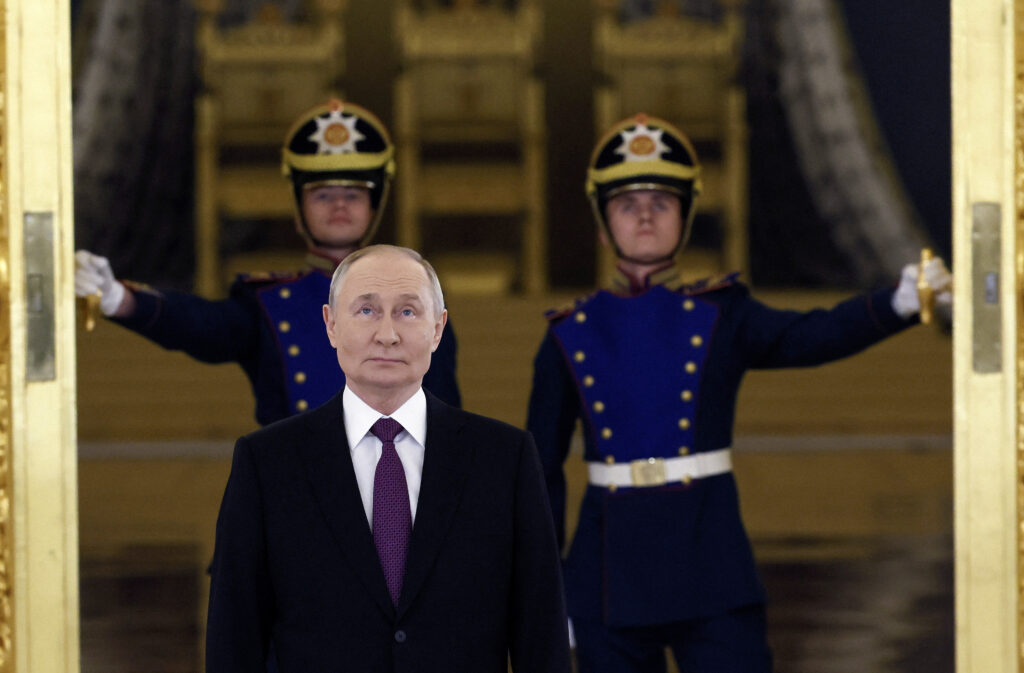By Peter Dickinson, for UkraineAlert
After months of debate and hesitation, US President Joe Biden has finally given Ukraine the green light to conduct long-range strikes inside Russia using US-supplied weapons. According to reports, Biden has initially authorized strikes in Russia’s Kursk region, where Ukraine has occupied hundreds of square kilometers of territory since summer 2024 but now faces a counteroffensive involving thousands of North Korean troops.
The relaxation of restrictions on airstrikes inside Russia using US-made ATACMS missiles represents a major shift in US policy. It comes just weeks before Biden is set to be replaced in the White House by Donald Trump, who is expected to push for peace talks between Russia and Ukraine.
Biden’s decision has provoked a mixture of anger and alarm in Russia. Kremlin spokesman Dmitry Peskov led the chorus of criticism, accusing the United States of “deliberately pouring oil on the fire.” Russian Senator Vladimir Dzhabarov went even further, branding the move, “a very big step toward the beginning of World War III.” Meanwhile, Russian government newspaper Rossiyskaya Gazeta warned that “the madmen who are drawing NATO into a direct conflict with our country may soon be in great pain.”
Despite the histrionics in Moscow, this week’s US move to allow limited strikes on Russian territory is unlikely to transform the battlefield or spark a world war. The scope for potential strikes is far too narrow, while Russia has already had more than enough time to move the most interesting targets well out of range. The real significance of Biden’s green light lies in what it tells us about the diminishing impact of Vladimir Putin’s red lines.
Ever since the very first hours of the invasion, Putin has been using thinly veiled threats to intimidate the West into inaction. This approach has proved highly effective, with risk-averse Western leaders delaying arms deliveries to Ukraine and imposing absurd restrictions on the use of Western weapons that have left many in Kyiv exasperated. However, as the war has progressed, Putin’s red lines have repeatedly been crossed without consequence, leading many to conclude that the Russian dictator has been bluffing all along.
Putin’s first big bluff came during his official address announcing the attack on Ukraine, when he warned Western leaders that any attempts to interfere would result in consequences “such as you have never seen in your entire history.” Three days later, he hammered the point home by placing Russia’s nuclear forces on high alert. When a coalition of Western nations chose to ignore these warnings and began arming Ukraine, there was no nuclear escalation.
Putin’s approach to wartime setbacks in Crimea has arguably been even more revealing. Ever since the seizure of the Ukrainian peninsula in spring 2014, the Kremlin has portrayed the conquest of Crimea as Putin’s crowning glory and the basis for his claim to a place in Russian history among the country’s greatest rulers. This led many to assume that he would defend Crimea with particular vigor. Instead, when Ukraine bombed Russia’s Crimean naval headquarters and sank or damaged one-third of Putin’s entire Black Sea Fleet, he quietly ordered his remaining warships to retreat to the safety of Russian ports.
The biggest blow to the credibility of Putin’s threats came in August 2024, when the Ukrainian army crossed the reddest of all red lines by invading Russia itself. Faced with the first foreign occupation of Russian soil since World War II, Putin issued no nuclear ultimatums and made no effort to rally the Russian people against the invader. On the contrary, he downplayed the entire Ukrainian offensive as a mere “provocation,” and ordered the Kremlin-controlled Russian media to minimize the significance of Ukraine’s historic advance.
Despite these very public embarrassments, Putin has clung to his intimidation tactics. Indeed, as the debate over permitting long-range strikes inside Russia gained momentum in September 2024, he actually sought to up the ante by announcing that any decision by the US or European countries to lift restrictions would mean they were “at war” with Russia. Weeks later, he unveiled proposed changes to Russia’s nuclear doctrine that lowered the threshold for the use of nuclear weapons and specifically addressed possible long-range missile attacks. In hindsight, this may have been too blatant, even by Russian standards.
Unfortunately for Putin, it appears that even the Biden White House has now concluded that his threats are empty. This is undoubtedly bad news for the Russian war effort. For almost three years, Western leaders have allowed themselves to be intimidated by Putin, and have let fear of escalation define their response to the largest European invasion since World War II. The West’s excessive caution has left the Ukrainian army perpetually short of weapons, and has made it possible for Russia to punch far above its weight in what would otherwise have been a complete military mismatch.
That may now be changing. Biden’s decision to authorize long-range strikes inside Russia will not alter the course of the war, but it does strike a powerful blow against the failed policies of escalation management that have done so much to undermine international support for Ukraine. Putin’s ability to intimidate the West has been his biggest success of the entire war, but it would seem that his bluff has been called once too often and his threats no longer resonate. If other countries now follow Biden and abandon the timidity of the past three years, they may find that Putin suddenly becomes much keener on the idea of a negotiated settlement.
By Peter Dickinson, for UkraineAlert
Peter Dickinson is editor of the Atlantic Council’s UkraineAlert service.





